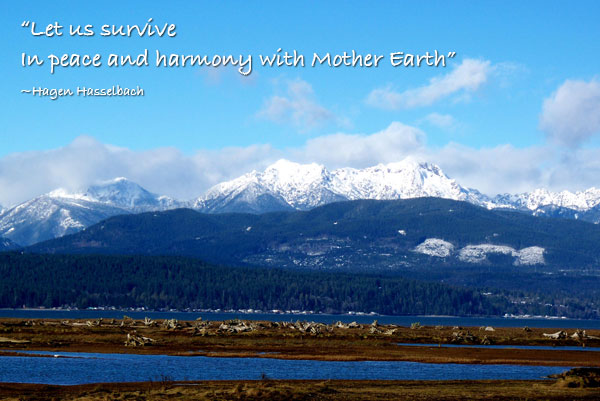|
The First arrivals>> . . . . . . . . . . . . . . . . . . . . . . . . . . . . . . . . .
Man arrived in the Puget Sound Basin around 10,000 b.p., and literally found a paradise.
The ridge and valley pattern of the Olympic Mountains on the east of the Trough and the Cascade Mountains to the west greatly influences all life in the Puget Sound region.
These two immense watersheds combined with the high mountain ridges form a vast entrapment of moist, temperate Pacific Ocean air over the Puget Sound region. Thus, life flourishes......................!
The runoff from the rivers, like the Skokomish River, from the central and east side of the Olympics pour into the Hood Canal. And life in the Hood then flourishes with this rich nutrient runoff.
The Olympic Mountains are also host to abundant wildlife of many species from mountain goats to the Olympic marmot. Black bear, Roosevelt elk and black-tailed deer also make the Olympics and our farm their home. During the year these species often migrate from one elevation to another in search of food.
You'll rarely see predators like the elusive cougar or bear and the more frequent coyote. River otters frequent the Skokomish rivers together with muskrats and beaver.
Below the rocky peaks, some exceeding elevations of 7,000+ feet, the mountains give way below the timberline to forested hillsides termed mid-montane forests. As you move still lower these forests of predominantly Pacific silver fir, up to 180 feet in height, give way to dense deciduous forests of alder and maple trees
You'll find magical wood sorrel resembling large shamrocks, chantrelle and morel mushrooms in the deep moss on the forest floor. You'll stand in awe at the towering canopy above you.
Our lush forests are very special.................
|

